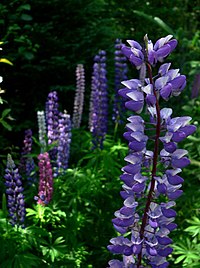
Quantifying linkages between watershed factors and coastal wetland plant invasion in the US Great Lakes
Sign Up to like & getrecommendations! Published in 2020 at "Landscape Ecology"
DOI: 10.1007/s10980-020-01124-3
Abstract: Freshwater coastal wetlands provide numerous ecosystem services, including habitat, nutrient uptake, coastal stabilization, and aesthetic value, but the integrity of these ecosystems is threatened by invasion of non-native competitors. Invasive species, such as Phragmites and… read more here.
Keywords: wetland plant; invasion; coastal wetland; plant invasion ... See more keywords

Plant invasion in mangrove forests worldwide
Sign Up to like & getrecommendations! Published in 2018 at "Forest Ecology and Management"
DOI: 10.1016/j.foreco.2018.07.046
Abstract: Abstract Plant invasion is a major threat to natural ecosystems, and mangrove forests are among the most threatened ecosystems in the world. However, since mangrove species primarily occur in the saline and intertidal environment that… read more here.
Keywords: invasion mangrove; plant; mangrove forests; plant invasion ... See more keywords

Functional traits modulate plant community responses to alien plant invasion
Sign Up to like & getrecommendations! Published in 2019 at "Perspectives in Plant Ecology, Evolution and Systematics"
DOI: 10.1016/j.ppees.2019.02.003
Abstract: Abstract It is well known that alien plant invasion modifies the composition and diversity of resident plant communities, yet our ability to predict patterns of vegetation responses to invasion is hampered by a poor understanding… read more here.
Keywords: community; invader; invasion; functional traits ... See more keywords

Geographic population structure in an outcrossing plant invasion after centuries of cultivation and recent founding events
Sign Up to like & getrecommendations! Published in 2018 at "AoB Plants"
DOI: 10.1093/aobpla/ply020
Abstract: We investigated the genetic diversity and origins of a long-term cultivar. Dyer’s woad has been used as a dye source for at least eight centuries in Eurasia. It was introduced to eastern USA in the… read more here.
Keywords: structure outcrossing; plant; population structure; geographic population ... See more keywords

Non‐native plant invasion can accelerate global climate change by increasing wetland methane and terrestrial nitrous oxide emissions
Sign Up to like & getrecommendations! Published in 2022 at "Global Change Biology"
DOI: 10.1111/gcb.16290
Abstract: Approximately 17% of the land worldwide is considered highly vulnerable to non‐native plant invasion, which can dramatically alter nutrient cycles and influence greenhouse gas (GHG) emissions in terrestrial and wetland ecosystems. However, a systematic investigation… read more here.
Keywords: change; plant; non native; plant invasion ... See more keywords

Influence of multiple global change drivers on plant invasion: Additive effects are uncommon
Sign Up to like & getrecommendations! Published in 2022 at "Frontiers in Plant Science"
DOI: 10.3389/fpls.2022.1020621
Abstract: Invasive plants threaten biodiversity and cause huge economic losses. It is thought that global change factors (GCFs) associated with climate change (including shifts in temperature, precipitation, nitrogen, and atmospheric CO2) will amplify their impacts. However,… read more here.
Keywords: plant invasion; invasive plants; global change; plant ... See more keywords

No Support for the Neolithic Plant Invasion Hypothesis: Invasive Species From Eurasia Do Not Perform Better Under Agropastoral Disturbance in Early Life Stages Than Invaders From Other Continents
Sign Up to like & getrecommendations! Published in 2022 at "Frontiers in Plant Science"
DOI: 10.3389/fpls.2022.801750
Abstract: Pre-adaptation to disturbance is an important driver of biological invasions in human-altered ecosystems. Agropastoralism is one of the oldest forms of landscape management. It surged 12,000 years ago in Western Asia and it was then… read more here.
Keywords: exposure; plant invasion; agropastoralism; disturbance ... See more keywords